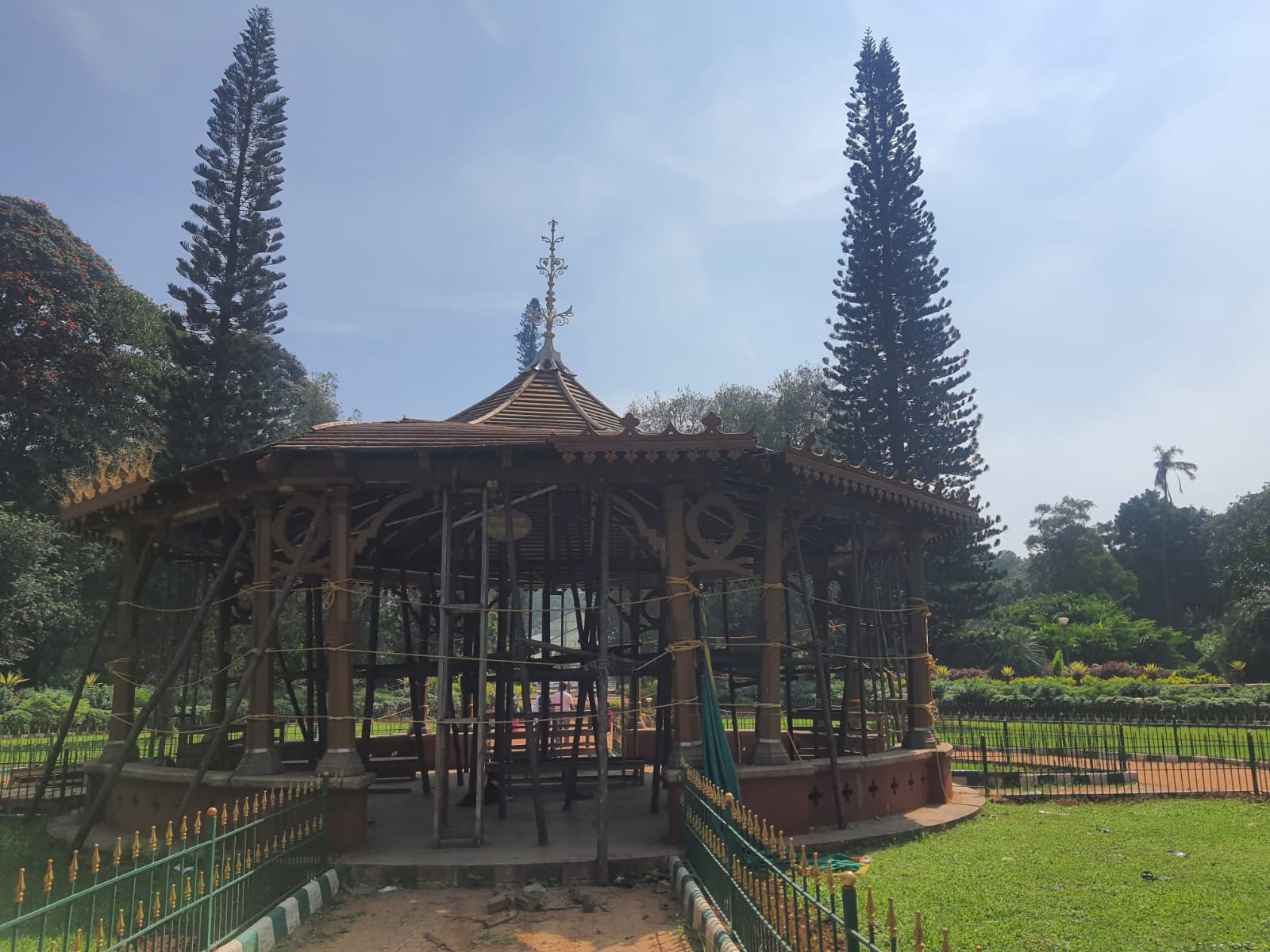A walk through Lalbagh like never before
On Sunday, Kodavarthi led a group of over 20 heritage enthusiasts through the verdant lanes of Lalbagh, uncovering a wealth of overlooked stories and architectural gems
Salar News
-
Bandstand, built by John Cameroon in 1870, was the original Glass House to hold the flower show. PHOTO: SALAR
Bengaluru, 10 Nov
Telling historical anecdotes recollecting
from memories is a passion for City-based Shyam Kodavarthi, a retired software
engineer and Cessna pilot. The 63-year-old’s love for heritage and his
experience of travelling across India have made him a sought-after guide for
heritage walks in State, especially through historical sites. "I am a
traveller who writes, often chronicling solo journeys on roads less
travelled," he said.
On Sunday, Kodavarthi led a group
of over 20 heritage enthusiasts through the verdant lanes of Lalbagh,
uncovering a wealth of overlooked stories and architectural gems. Their journey
began at a striking lantern-shaped guard house near the West Gate, which Diwan
Krishnamurthy, great-grandson of Diwan Purnaiah, originally built. “The British
relocated this from Race Course Road during an expansion. When lit, it glows
like a lantern,” Kodavarthi said.
Kodavarthi revealed the creation of
Lalbagh to the participants from all walks of life. In the 1720s, Mughal
emperor Aurangzeb ordered Dilawar Khan to create a garden at Sira, Tumakuru.
Inspired by this, Haider Ali established Lalbagh in Bengaluru in 1761.
For Lars Johnson, a visitor from
Sweden, the walk was a memorable introduction to both Bengaluru and its
history. “It was an excellent heritage walk,” she said.
One of the standout moments on the
tour was the discovery of a circular structure dating back to 1852. Initially
built as an aquarium, it was later converted into Nanjappa Memorial Hall in
1951. Though now abandoned, it serves as a quiet testament to Lalbagh’s layered
past.
Lalbagh is also home to unique
trees, including 15 white silk cotton trees and a Baobab imported from
Madagascar, which was felled after a lightning strike. He also pointed out a
20-million-year-old petrified coniferous tree, often missed due to a lack of
information signage.
The iconic Band Stand was built in
1870 by then Labagh superintendent James Cameron to display flowers before the
construction of the famous glasshouse. Cameron also created a dovecote in 1893,
which once accommodated 100 pairs of doves but is now not functional.
The walk ended at a newly restored
site where the demolished Krumbiegel Hall once stood, leaving participants,
like 75-year-old Padma, nostalgic. “The walk rekindled memories of my beautiful
childhood,” she said. – Salar News
Leave a Reply
Your email address will not be published. Required fields are marked *










.jpg)









